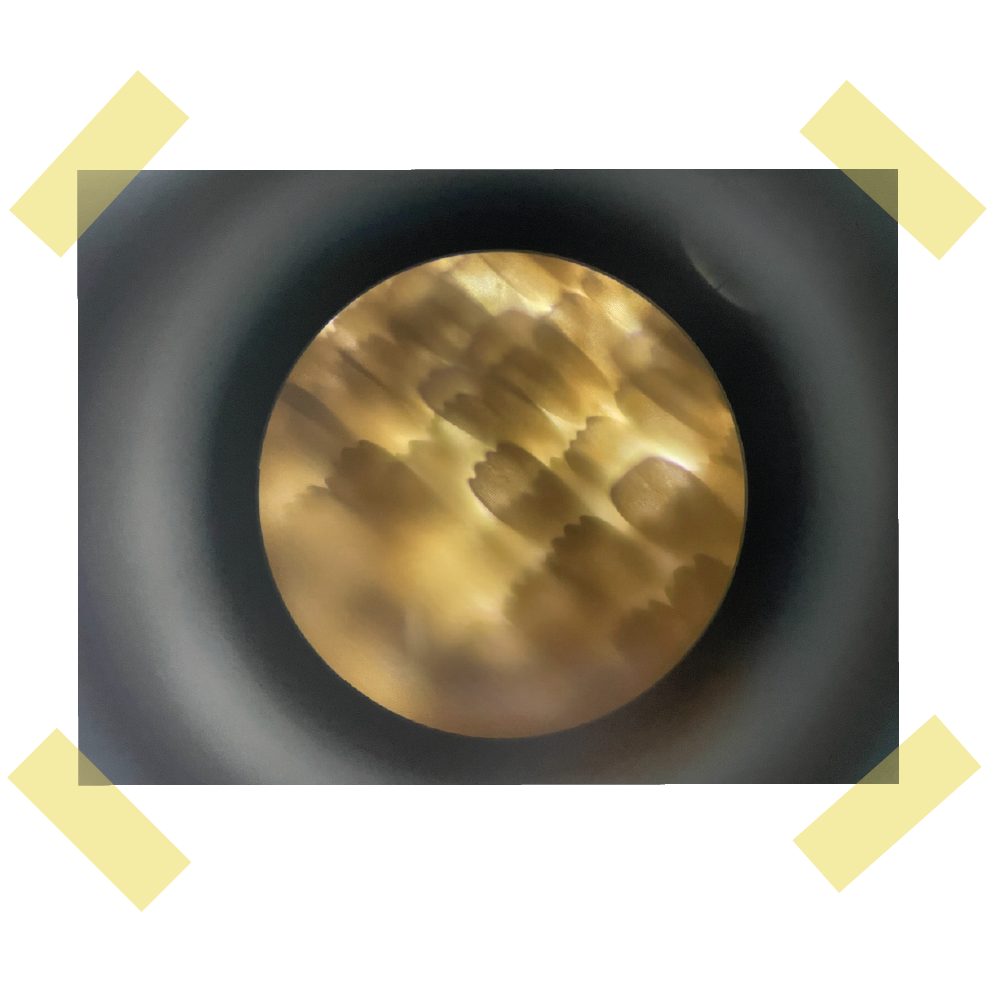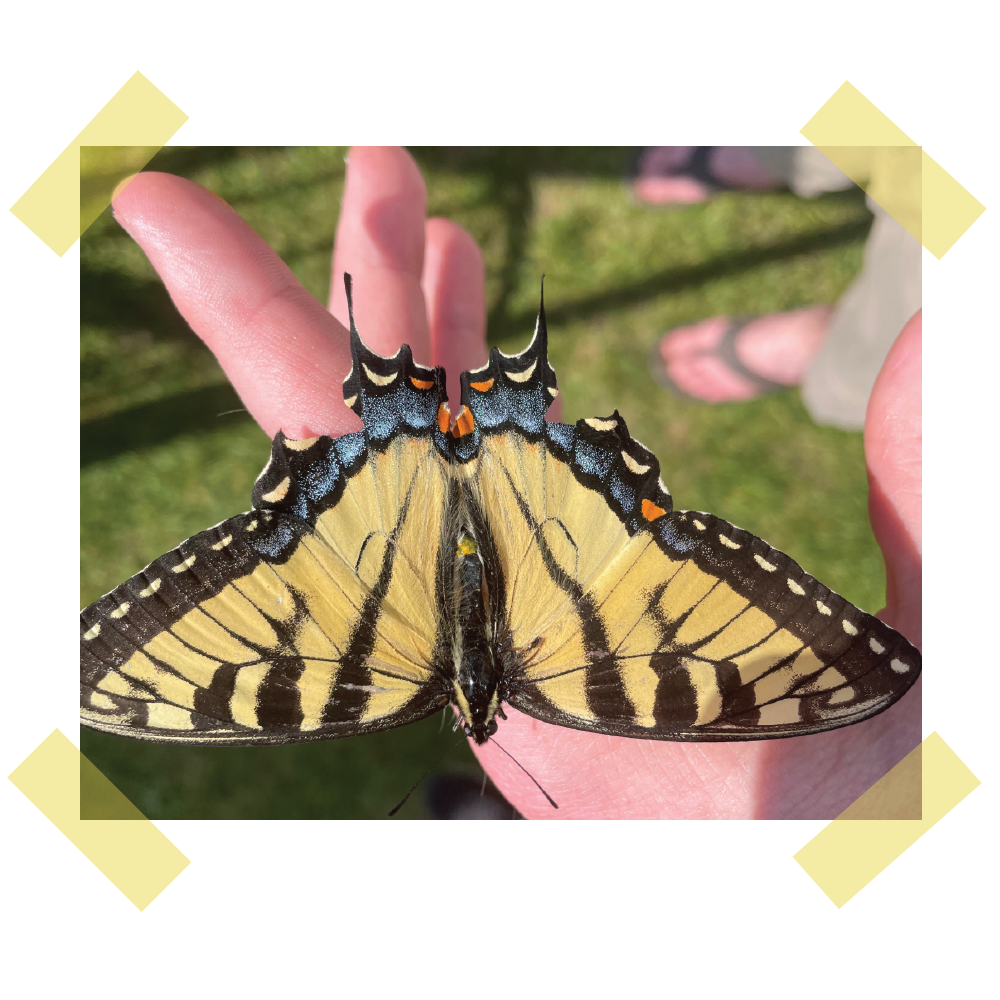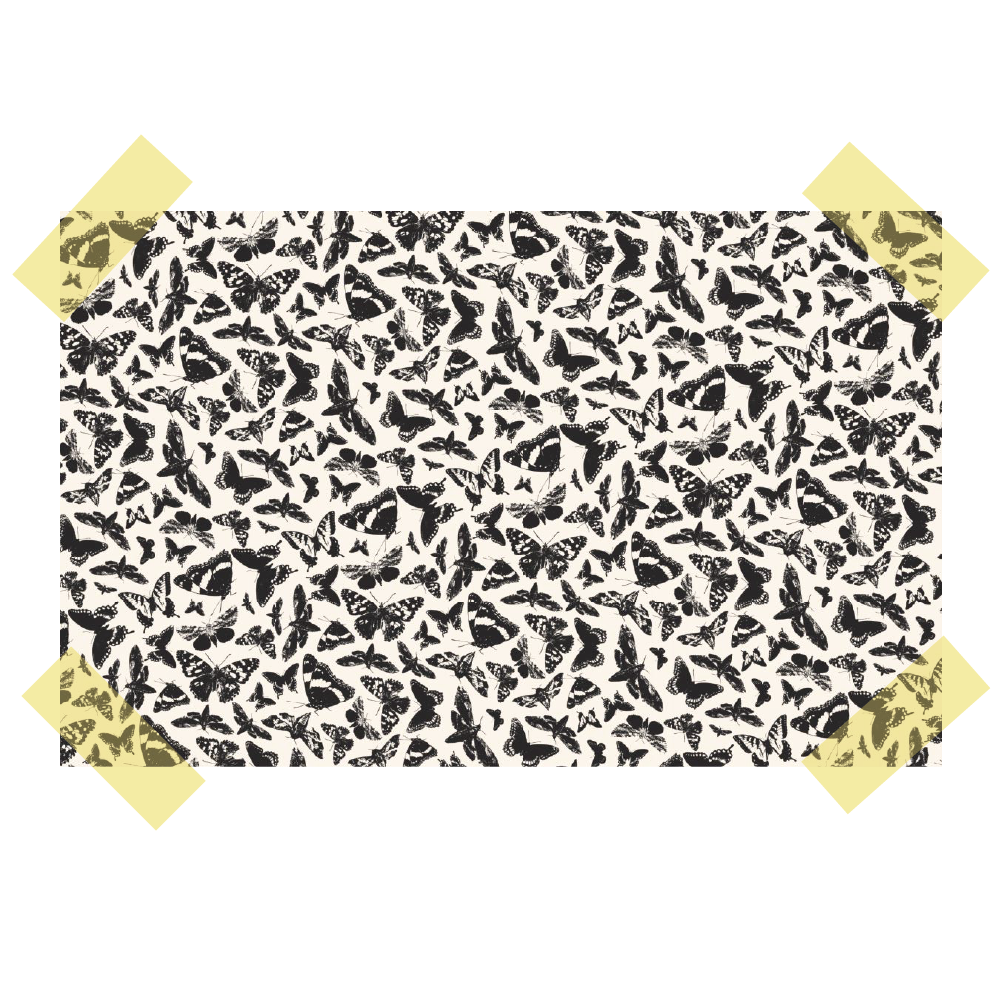
Entry No. 2: BUTTERFLIES // The Science Behind the Collection

Entry No. 2
Species: Butterflies + Moths
Scientific Study
My dad is a retired Earth Science teacher who spent several decades filling his classroom—and our home—with educational artifacts.
Many of the butterflies and moths featured in my clothing collection are the same ones I grew up admiring as a child. With my dad’s help (and a little online research), I was able to identify each one:

(Above photo: All the butterflies and moths featured in the clothing collection)
My scientific study continued. I borrowed one of my dad’s butterflies and placed it under a microscope — and was amazed to discover that butterfly wings are made up of tiny, overlapping scales!

A butterfly wing under a microscope is made up of tiny scales. Isn't that fascinating?
Butterfly wings are covered in thousands — even up to a million — of these flat, shingle-like scales. Some contain natural pigments, while others act like little prisms, bending and reflecting light to create those stunning, iridescent hues you see in species like morphos and swallowtails.
As I studied more closely, I noticed a pattern: many butterflies have small spots near the edges of their wings. Why? Turns out, it’s a clever survival tactic. Predators tend to strike at bold, visible targets — so placing bright spots far from vital organs helps the butterfly survive an attack. A predator might strike the wing, not the body, allowing the butterfly to escape with just a nicked wing.

Above is a White Admiral. You can see the bands of spots at the edge of its wings.
In the next journal entry, I’ll show you how these scientific details inspired elements of my designs. Until then…
Wild Regards,
Kate



Leave a comment
This site is protected by hCaptcha and the hCaptcha Privacy Policy and Terms of Service apply.